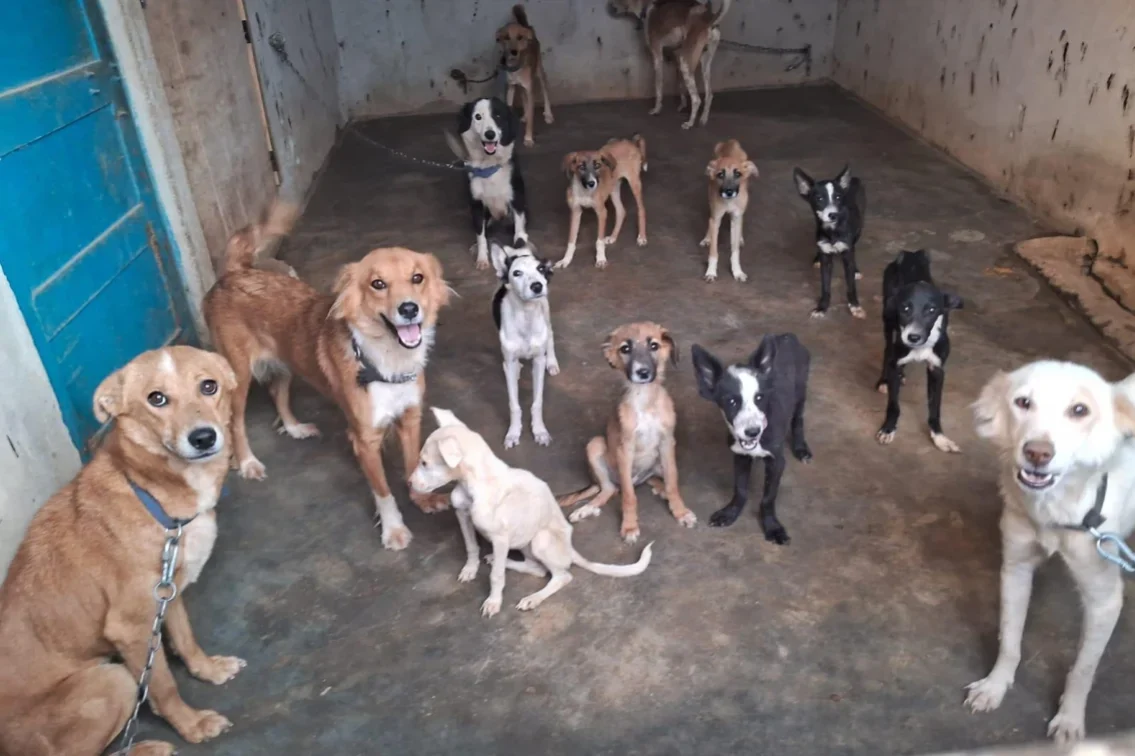Read up about pancreatitis and learn how to identify symptoms of the disease.
At VOSD, we offer expert medical care to the dogs that live with us. However, we understand that we cannot take in every dog in the country (though we want to). As an alternative, we discuss the different ways in which we can disseminate important medical information for you to access from the comfort of your home.
Please note that this medical information is in no way a substitute for visiting a veterinarian (read our disclaimer below). But with our help, you might be able to identify an illness in your dog before it’s too late – and it all starts with identifying the symptoms.

What is Pancreatitis?
Simply put, pancreatitis is when the pancreas of a dog becomes inflamed. The pancreas in a dog is below its stomach area, very close to the small intestine. The pancreas is responsible for secreting digestive enzymes. Digestive enzymes break down food into small particles so that dogs can absorb important nutrients from this broken-down food. The pancreas also produces insulin and glucagon – important and necessary for the maintaining of blood sugar levels. The pancreas exists to keep the dog healthy and strong.
The digestive enzymes are acidic (as this helps in the breakdown). Ideally, the pancreas releases these enzymes into the small intestine. But the problem occurs when the enzymes act up prematurely.
Why is it harmful?
Are you familiar with acidity in humans and the pain it can cause? Have you ever had to take an antacid as a result? Well, this happens to dogs too.
When the aforementioned digestive enzymes start activating INSIDE the pancreas, you know there’s a problem. Acid is a corrosive agent. So, it can’t be very good for the pancreas if it is being attacked and broken down.
How does it get worse in the long run?
Once the acid eats up and digests the pancreas, it will be free to go around to the rest of the body and destroy things! Very often, it affects the liver as well, and soon, the rest of the body. All of the corrosive, heat-producing enzymes end up causing widespread inflammation in dogs.
How to identify pancreatitis
Is your dog not eating? Is it regurgitating its food too often? These are both symptoms and signs of pancreatitis. You might also witness your dog hunched over in pain during a pancreatitis attack. You will notice that your dog is generally sad and has a fever. If you keenly observe your dog when these things happen, chances are you’ve identified the symptoms of pancreatitis.

Why does pancreatitis happen in dogs?
Of course, pancreatitis usually doesn’t just happen on its own. There are several reasons for the development of pancreatitis in the body of a dog.
- Your dog’s diet: If your dog is eating fatty foods all the time, we can guarantee there will be a host of health problems to deal with. Apart from cholesterol and blood pressure, pancreatitis is a result of a high-fat diet. Be wary of the meat cuts that you serve your dog – avoid the fatty bits. You can also read a list of things to not feed your dog here.
- Physical injury: It could be a simple mistake during surgery, or an injury to the groin area due to multiple factors. Internal injuries that might rub against the pancreas could easily provoke the disease.
- Plain genetics: Many dogs that are the result of inbreeding can be genetically predisposed to diseases, pancreatitis being one of them.
- Hormone imbalance: Diabetes is caused because insulin isn’t processed in the pancreas. The indirect factors definitely have an impact on pancreatitis as well.
- Old age and weight: Dogs that have compromised immune systems due to age and obesity are prone to diseases like pancreatitis.
- Chemical toxins: Research suggests that when a dog ingests strong drugs because of some other health disorder, they might still not be able to adapt to the drug itself. Drugs used in chemotherapy are said to cause pancreatitis, as well as drugs like potassium bromide.
- Parvo: If your dog suffers from parvo (a highly contagious and dangerous virus that causes intestinal and gastric issues in young dogs), it can lead to pancreatitis.
How to treat pancreatitis
This leads us to our next step. It is HUGELY IMPORTANT to get swift medical care for dogs with pancreatitis. The reason for not waiting is that you simply cannot tell how severe the level of destruction is inside the dog’s body. And you most certainly do not want to wait until it’s too late for medical intervention.
Even mild pancreatitis will require a visit to the veterinarian.
The first thing a doctor will do is to ask you to not feed your dog for 24 hours. This is to ensure that the body is not working overtime to digest food during the healing process.
A doctor will normally prescribe anti-pain medication and anti-bacterial medication to the dog. The anti-pain is because dogs do not react to pain well. They might get depressed and compromise their immune systems in the process, as they may not have n outlet to release their pain. Secondly, if the intestine is not optimal, it could be an easy invitation for bacteria to enter and cause further damage. So, anti-bacterial medication works well to keep the pancreas and intestines otherwise healthy.
Pankreoflat (100mg) is a tablet that your dog’s veterinarian might recommend to treat pancreatitis. This medication is suitable for adult dogs that are between 25 kilograms to 40 kilograms in weight.
After recovery, your dog needs to continue eating a low-fat diet. Pancreatitis can always be triggered again. It is very similar to acidity in humans, and as a dog owner, keep in mind that you will have to monitor your dog’s diet very carefully for the rest of its life. This is why prevention and a good diet from birth is the best thing you can do for a dog.
What else can you do?
Ensure that you take your dog on its usual daily walks. Exercise is always good for health. Try and keep your dog fit in other ways and keep an eye out for poisonous ingestible items. Pancreatitis is not easy to handle, especially if it is acute.
The information contained in VOSD Vet Advice™ is not intended nor implied to be a substitute for professional medical action which is provided by your vet. You assume full responsibility for how you choose to use this information. For any emergency situation related to a dog’s health, please visit the nearest veterinary clinic.





